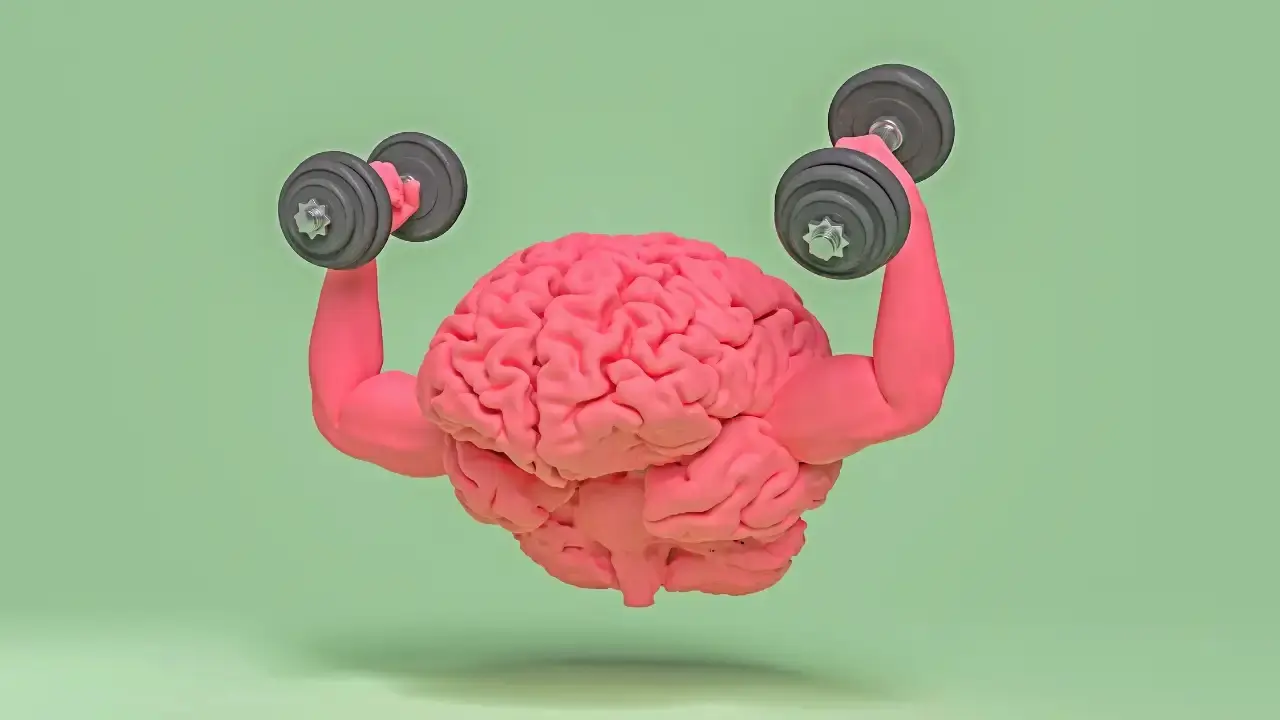
The Science Behind Resilience: How the Brain Rewires After A Setback

Everyone faces rough days. Whether it's an argument with a loved one, a failed project, or simply being overwhelmed by responsibilities, the weight of setbacks is universal. These moments can feel heavy and disorienting. Yet, time and time again, people find themselves bouncing back—sometimes faster than they imagined possible.
But that recovery isn’t just a matter of “time healing all wounds.” It's your brain working quietly behind the scenes, activating a built-in system designed for adaptation, survival, and growth. This extraordinary ability is known as resilience—a dynamic process where biology, psychology, and environment blend to help humans overcome adversity and keep moving forward.
Far from being just a motivational buzzword, resilience is deeply rooted in neuroscience. It proves that the brain is not a fixed machine but a flexible, evolving system that constantly rewires itself in response to experience. And here’s the exciting part: you don’t have to be superhuman to develop it—resilience is part of your natural design.
The Brain as a Self-Recovering System
At first glance, it might seem strange to think of the brain as something capable of emotional self-repair. But neuroscientists have discovered that the brain possesses an incredible trait called neuroplasticity—its ability to adapt and reorganize itself, even after setbacks.
Picture your brain as a vibrant city. Highways represent neural pathways, carrying thoughts, feelings, and actions like vehicles navigating the streets. When stress or trauma strikes, traffic jams form. But instead of staying stuck in gridlock, the brain reroutes traffic, builds new pathways, and clears blockages. Over time, detours become the new expressways.
This constant renovation is what enables us to bounce back, learn from difficulties, and handle future challenges with more skill and perspective.
Scientific studies reinforce this idea. For example, researchers at the University of Pennsylvania found that people who regularly practiced positive coping strategies—like reframing thoughts or engaging in self-compassion—showed physical changes in brain connectivity. Especially in regions associated with emotional regulation and executive control. The more they practiced, the stronger those connections became—almost like building up mental “muscle memory.”
This means that resilience isn't something you're either born with or not. It's something your brain can learn, strengthen, and refine over time.
Stress and the Brain’s Chemical Symphony
When life throws us a curveball, the brain doesn’t just sit still. It launches into a biochemical performance designed to help us survive. Stress hormones like cortisol flood the system, increasing heart rate, sharpening focus, and prepping muscles for a “fight or flight” response.
In the short term, this stress response is useful. But it’s not meant to stay active forever.
Here’s where resilience shows up again. Once the danger or pressure subsides, the brain works to bring everything back to baseline. Cortisol levels drop. Mood-boosting chemicals like dopamine, serotonin, and oxytocin step in to restore balance. Imagine a tense symphony gradually shifting from pounding drums to gentle violins—that shift is your brain’s way of resetting.
Even small moments of joy can accelerate this chemical recovery. Laughing with a friend, taking a walk in nature, or petting a dog can trigger the release of calming neurotransmitters. In fact, research shows that people who own pets often recover from stress faster due to increased oxytocin during physical interaction, strengthening emotional stability over time.
The Role of Life Experience in Building Resilience
One of the most empowering truths about resilience is that it isn’t fixed. Some people assume you’re either born tough or you’re not. But science tells a different story: resilience can be cultivated, no matter your starting point.
Consider a child growing up with attentive, emotionally supportive caregivers. Even if they face hardship, the presence of consistent support helps them interpret adversity as manageable. Their brain learns that challenges are temporary and survivable.
On the other hand, someone who grows up in chaos or neglect might struggle more with emotional regulation. Yet even in these cases, resilience isn’t off the table—it can still be developed later in life. Through intentional effort, safe environments, and supportive relationships, new patterns can be formed.
A good example comes from military psychology. Studies on soldiers exposed to stress inoculation training—structured simulations of high-stress environments—show they develop stronger resilience reflexes. Their brains learn not just how to endure discomfort, but how to recover from it more quickly and effectively.
The takeaway? The brain gets better at resilience with practice.
Everyday Tools to Strengthen Resilience
You don’t need to be in a lab, a therapy office, or a war zone to build resilience. The brain’s natural recovery mechanisms can be strengthened through simple, daily habits.
1. Breathing with Intention
A basic tool with powerful results. Deep, controlled breathing—such as the 4-4-4 method (inhale for 4 seconds, hold for 4, exhale for 4)—sends safety signals to the brain. Research shows that deep breathing reduces cortisol and activates the parasympathetic nervous system, helping the body exit fight-or-flight mode.
2. Practicing Gratitude
Noticing three small things you’re thankful for each day shifts attention away from stress and toward positivity. Over time, this rewires the brain for optimism, which is strongly correlated with emotional resilience.
3. Moving Your Body
Exercise isn’t just good for your heart—it’s great for your brain. Walking, yoga, dancing, or even gentle stretching releases endorphins, which act as natural mood stabilizers and resilience boosters.
4. Taking Mindful Pauses
Just 60 seconds of mindfulness—tuning into your senses or your breath—can interrupt a cycle of negative thinking. Mindfulness has been shown to improve emotional regulation and enhance neural flexibility.
5. Staying Socially Connected
Humans are biologically wired for connection. Supportive relationships act as a buffer against stress and reinforce the brain's emotional safety circuits. Even a short, meaningful conversation can help recalibrate your nervous system.
6. Writing and Reflection
Journaling can provide emotional clarity and promote problem-solving. Reflecting on challenges from a growth-oriented mindset turns painful experiences into learning opportunities, further developing resilience.
Nature and Humanity: Mirrors of Resilience
Nature offers countless examples of resilience that parallel how the human brain works. Consider a forest after a wildfire. While the landscape appears destroyed, within weeks, new life emerges from the ashes. Trees regrow, ecosystems recalibrate—and often come back more diverse and robust.
Humans function the same way.
Take Viktor Frankl, Holocaust survivor and psychiatrist. Despite experiencing unimaginable suffering, he noticed that those who could find meaning in their pain were more likely to recover emotionally. His experience led to the creation of logotherapy, a therapeutic model grounded in the belief that purpose fuels resilience.
Modern research supports this. A growing field of psychology called post-traumatic growth explores how people often emerge from adversity with greater appreciation for life, deeper relationships, and renewed purpose.
Why Everyday Challenges Matter
It’s easy to think resilience only matters during major crises. But the small, everyday setbacks—missing a deadline, getting stuck in traffic, receiving tough feedback—are just as critical for building a resilient brain.
These little moments act like mental workouts, training the neural circuits responsible for emotional recovery. Over time, repeated exposure to manageable stress builds strength, just like lifting light weights prepares you to lift heavier ones.
With each minor rebound, your brain becomes more confident in its ability to recover. These small reps are what make big comebacks possible.
Turning Resilience Into a Lifelong Habit
Here’s the best part: resilience isn’t something you “run out of” as you age. In fact, research shows that older adults often have greater emotional resilience than younger people—not because life gets easier, but because they’ve had more time to practice bouncing back.
Like physical health, resilience thrives on consistency. Small, intentional habits—like gratitude, movement, social connection, and mindful rest—reinforce the brain’s recovery systems over time. The more often you use them, the more automatic and powerful they become.
Final Thought: Your Brain Is Built for Comebacks
Resilience isn’t about ignoring pain or pretending life is always fine. It’s about understanding that your brain is naturally equipped to adapt, recover, and grow stronger from hardship.
Think of your brain as a quiet, loyal ally—constantly rewiring, rebalancing, and pushing you forward. Every small setback becomes a stepping stone toward greater emotional strength.
So the next time life throws you off course, remember: you don’t have to start from scratch. You’re already wired for resilience. With practice, patience, and a few daily rituals, you’re not just bouncing back—you’re bouncing forward.
News in the same category


If You Do These 8 Things You Are Slowly Destroying Your Brain

How Drinking Bottled Water Could Seriously Impact Your Health

The Unexpected Health Benefits You Get from Massaging Your Feet Often Will Shock You

Symptoms of Vitamin B12 Deficiency

If Your Heart Hurts Suddenly, It Could Be a Warning Sign of These Diseases

Study Confirms: Your Morning Coffee Boosts Happiness

Swollen Legs, Ankles and Feet: Causes and Proven Remedies (Including Parsley Tea Recipe)

We Tested Dozens of Workout Leggings — These 11 Were the Best

pH Balance and Your Health: What the Science Says About Acidosis and Alkalizing Your Body

5 Best Foods for Alopecia

The Anti-Cancer Diet: Cancer Fighting Foods to Help Prevent Cancer (Evidence Based)

How to Get Rid of Bad Breath (Halitosis): Scientifically Proven Home Remedies

Which Antiplatelet Works Better in Impaired Renal Function?

Debate Over? Radiotherapy vs Surgery in High-Risk Prostate Cancer

Powerful Piriformis Stretch to Soothe Sciatic, Hip, and Lower Back Pain

Schamroth Window Test May Reveal if You Have Finger Clubbing

6 Benefits of Eating Garlic Before Bedtime
News Post

'Hostile' comet aimed at Earth could obliterate the world's economy 'overnight' if it hits

Iconic movie sequel delayed until 2027 after online sleuths 'guessed the plot'

Wooden Cutting Board Got Black Mold? Skip the Soap—Do This 5-Minute Reset

Don’t Use Plain Water for Flower Arrangements

When Boiling Sweet Potatoes, Don’t Use Plain Water—Add a Spoonful of This for Softer, Sweeter Results

Don’t Thaw Fish by Putting It in Water

Don’t Clean Your Bathroom Mirror with Plain Water

The Correct Way to Add Detergent and Fabric Softener to Your Washing Machine

Don’t Throw Away Rice Washing Water: 6 Smart Uses That Can Save Serious Money

Don’t Sleep With Your Pets

How to Store Fish and Meat in the Refrigerator: Shop Less, Keep Food Fresh All Month

How many eggs should you eat a week?

The Secret Meaning of the Letter “M” on Your Palm

The Remarkable Journey of Tru Beare, Who Was Born Weighing Only One Pound

If You Do These 8 Things You Are Slowly Destroying Your Brain

How Drinking Bottled Water Could Seriously Impact Your Health

The Unexpected Health Benefits You Get from Massaging Your Feet Often Will Shock You

Researchers Create Injectable Hydrogel to Boost Bone Strength

If You Have Moles on This Part of Your Body
